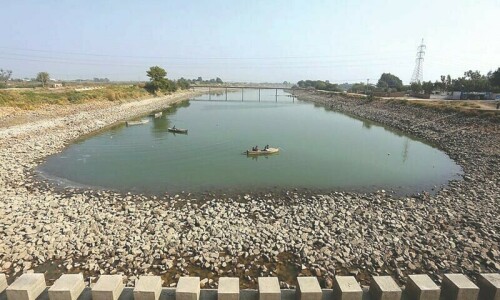ISLAMABAD: A drought risk management and mitigation strategy for South Asia has been prepared to improve early warning systems and strengthen drought risk management capacities.
The strategy has been prepared by the Asian Disaster Preparedness Centre (ADPC) in response to the United Nations Convention to Combat Desertification.
Bangladesh, Cambodia, China, India, Nepal, Pakistan, Philippines, Sri Lanka, and Thailand are the signatories of the international charter of ADPC, an organisation working for disaster risk reduction and building climate resilience in Asia-Pacific.
The strategy has been developed to provide a comprehensive framework for reducing drought risk and mitigating its impacts across South Asia.
Action plan prepared by ADPC to strengthen early warning systems
The plan focused on enhancing early warning systems, strengthening institutional capacity and promoting sustainable practices to build resilience against droughts.
The regional strategy covered five strategic priorities: observation, monitoring, forecasting, early warning; scientific research and application; governance; partnerships and cooperation; and training and capacity development.
These priorities are in line with the three pillars of integrated drought management promoted by the Integrated Drought Management Programme (IDMP): monitoring early warning; risk and impact assessment; and risk mitigation, preparedness and response.
The ADPC strategy has proposed regional and national action plans for each strategic priority, with short-, medium-, and long-term goals having varying priority levels (high, medium, low) and implementation ranking (easy/moderate/ challenging).
A robust monitoring and evaluation system has also been proposed for each strategic priority with key performance indicators (KPIs), means of verification (source), and frequency of verification to track progress and assess the effectiveness of interventions.
South Asia is heavily reliant on agriculture for its economies, rural livelihoods and food security.
The frequency of droughts has highlighted the need for effective management, including regular monitoring, forecasting, and early warnings, to increase drought resilience, according to ADPC.
The organisation added that drought is a complex phenomenon that results in significant water shortages and severe impacts on agricultural production, food security, energy production, public health, livelihoods and economies.
The calamity is a hydro-meteorological hazard that can be understood through different disciplinary lenses.
Four primary drought impact categories, each with a different set of
associated characteristics, are meteoro-logical drought, agricultural drought, hydrological drought, and socioeconomic drought.
Published in Dawn, December 15th, 2024















































